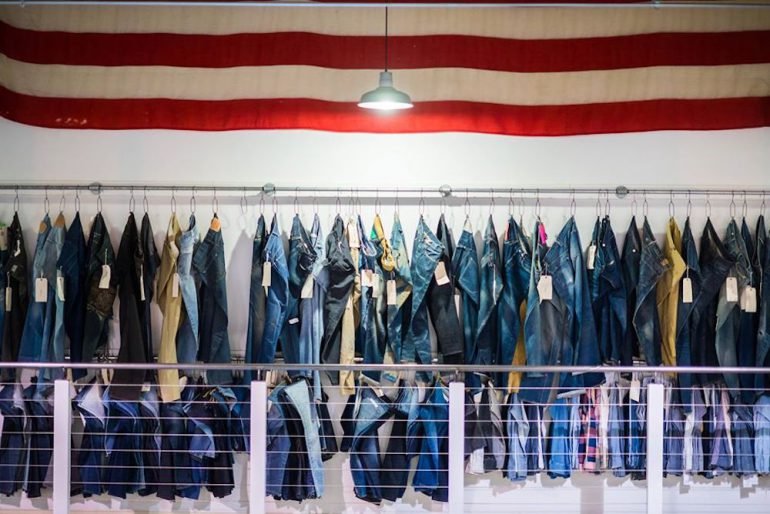Levi Strauss & Co. announced financial results for the third quarter ended 23rd August, 2020.
SEE ALSO : LEGO and Levi’s collaborate for a collection
Adjusted EBIT and adjusted diluted EPS were positive and adjusted free cash flow was even higher than the third quarter of the prior year, reflecting the company’s successful efforts to mitigate the impact of the COVID-19 pandemic. The company’s financial results continued to improve into the fourth quarter.
Although trends appear to be improving sequentially, and at a faster pace than previously expected, the ultimate impact of the COVID-19 pandemic remains highly uncertain. The company expects that its business and results of operations, including net revenues, earnings and cash flows, will continue to be significantly adversely impacted for at least the balance of 2020, and there remains the possibility of additional COVID-19 related inventory and other charges.
As store locations have reopened, the company’s e-commerce net revenues growth has remained strong, at 52 percent growth for the quarter as compared to the prior year. The company’s global digital business, which includes its e-commerce sites as well as the online business of its pure-play and traditional wholesale customers, comprised approximately 24 percent of third quarter 2020 revenues, double what it was a year prior, as consumer spending continued to shift towards online shopping experiences due to the changing retail landscape resulting from the global pandemic. Cash flow trends also continue to improve, and the company generate.
Net revenues declined 27 percent on a reported basis, and 26 percent on a constant currency basis excluding $16 million in unfavorable currency effects. The decrease was primarily due to the impacts of the COVID-19 pandemic including reduced traffic and on-going closures of company-operated and third party retail locations for portions of the quarter and in certain markets. Wholesale revenues declined 29 percent and direct-to-consumer revenues declined 22 percent; the direct-to-consumer decrease was partially offset by 52 percent growth in its company-operated e-commerce business, including the benefit of accelerating its omni-channel initiatives. Direct-to-consumer locations and e-commerce comprised 29 percent and 8 percent, respectively, of total company net revenues in the third quarter.
Gross profit was $577 million compared to $767 million in the same quarter in the prior year. Gross margin was 54.3 percent of net revenues, up from 53.0 percent in the same quarter of the prior year. The increase in gross margin was primarily due to price increases, a higher proportion of sales in the higher-margin direct-to-consumer channel, and a $7.9 million reduction in estimated COVID-19 related inventory charges largely for adverse fabric purchase commitments.
Adjusted gross margin, which excludes the COVID-19 related charges, was 53.6 percent, an increase of 60 basis points compared to prior year, primarily due to the price increases and higher proportion of sales in the higher-margin direct-to-consumer channel.
Selling, general and administrative (SG&A) expenses were $484 million, a 19 percent decline compared to $596 million in the same quarter in the prior year, reflecting the company’s cost-savings actions. Operating income of $92 million declined as compared to $171 million in the same quarter in the prior year, primarily due to the adverse impacts of COVID-19, including lower net revenues, partially offset by lower SG&A expenses reflecting the company’s cost-reduction initiatives.
Adjusted EBIT was $84 million, and adjusted EBIT margin was eight percent, despite the adverse revenue impact of COVID-19, due to the company’s cost-reduction initiatives and higher gross margin.
Adjusted net income was $31 million as compared to Adjusted net income of $128 million in the same quarter of the prior year, reflecting the adverse revenue impact of COVID-19, higher interest expense related to the company’s actions to enhance its liquidity position, and a higher tax rate. Adjusted diluted earnings per share declined to $0.08 compared to $0.31 for the same prior-year period in-line with the Adjusted net income decline.
In the Americas, net revenues declined 29 percent on a reported basis. Net revenues decreased due to lower revenues across Levi’s wholesale and company-operated stores as a result of the continued adverse impact of COVID-19. The decrease was partially offset by growth in the company’s e-commerce business and broader digital footprint due to increased traffic and higher conversion as consumer spending continued to shift towards online shopping experiences, as well as growth in the Signature by Levi
Strauss & Co.™ brand. Operating income for the Americas declined primarily due to the adverse revenue impacts of COVID-19, partially offset by declines in SG&A expenses driven by the company’s cost reduction initiatives in response to COVID-19.
In Europe, net revenues declined 16 percent on a reported basis. Net revenues decreased across markets, channels, brands and categories, due to the continued adverse impact of COVID-19, with the exception of the company’s e-commerce business and broader digital footprint, which experienced strong growth during the quarter due to increased traffic and higher conversion. Europe’s operating income declined primarily due to the adverse revenue impacts of COVID-19, partially offset by declines in SG&A expenses driven by the company’s cost reduction initiatives in response to
COVID-19.
In Asia, net revenues decreased 42 percent on a reported basis. The decrease in net revenues was across channels and markets due to the impacts of COVID-19. The most significant impact was a $51 million decline in India where several states remained in government mandated lockdown throughout the third quarter. Excluding India, net revenues in the region declined 24 percent. E-commerce in the region grew during the quarter due to increased traffic and higher conversion.
SEE ALSO : Levi Strauss reports 2020 first quarter sales results
Asia’s operating loss was primarily due to the adverse impacts of COVID-19, as lower net revenues were only partially offset by declines in SG&A expenses driven by the company’s cost reduction initiatives in response to COVID-19, and reflecting related support the company provided to franchisees in India as stores were closed in that market.




